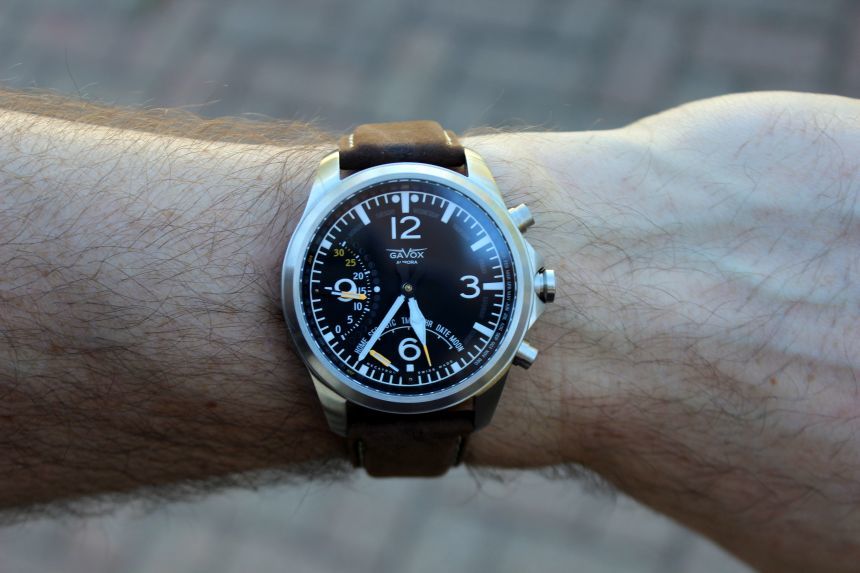
The last time we were taking a look at a Gavox watch, we had a very pilot-specific model on our wrists, the Gavox Squadron. Given the brand’s focus on aviation, we have not moved far afield from the world of pilot watches, and their latest creation, the Gavox Aurora, brings a world time function (amongst a few others) to the party. And this is no standard world timer that locks you into one-hour differentials, either. No, with the Gavox Aurora, you can adjust the offset in increments of 15 minutes. As I mentioned, that is not the only bit of functionality built in, so let’s fly on in and take a closer look.
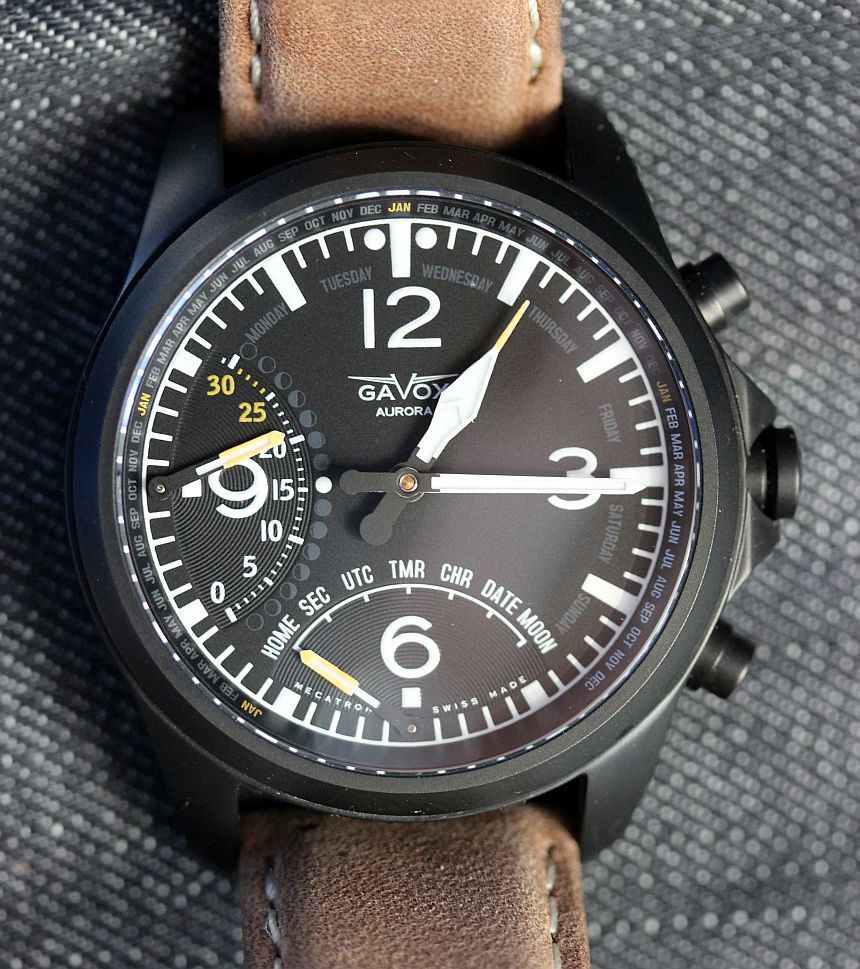
The Gavox Aurora, at 43mm, is one of the biggest watches that I have seen from the brand. Aside from basic legibility as well as current trends, I see a very good reason for why the case is sized as it is. Given the complexity of what the watch can actually display, having as much real estate as possible keeps things legible without the need for magnification. By way of explaining all the watch has on tap, we will use the retrograde indicator for the different modes down at 6 o’clock to step through the functionality.
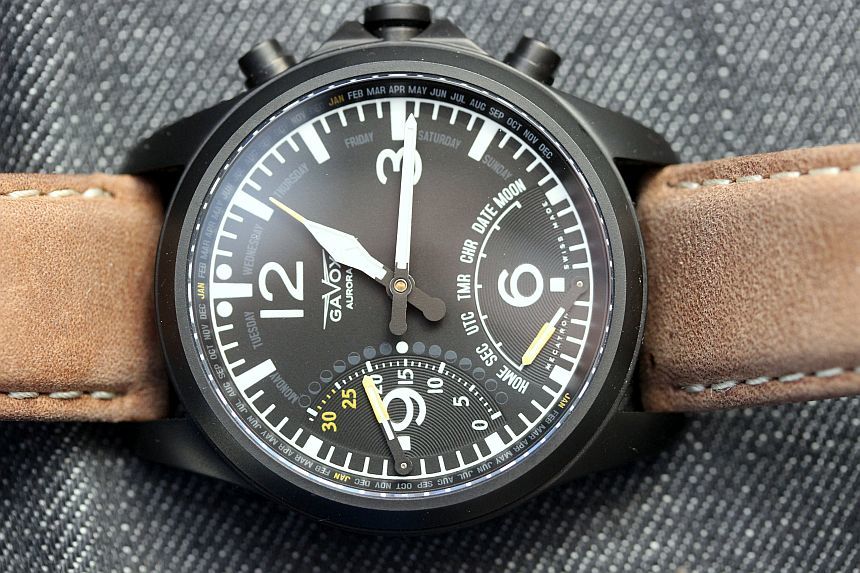
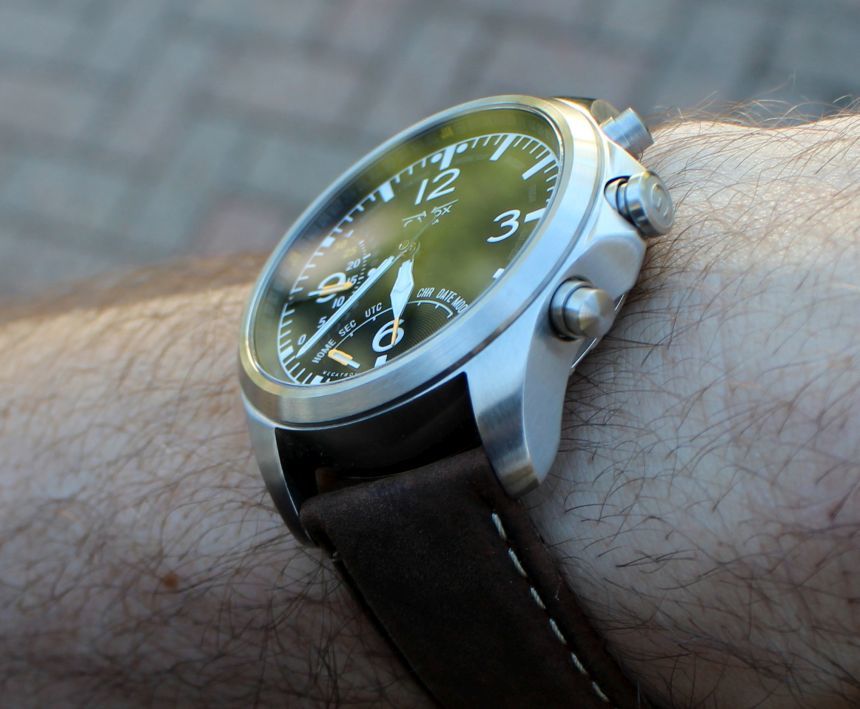
First up for the Gavox Aurora, we have your basic timekeeping and date which, in this mode, is at the 9 o’clock position indicated as “HOME” on the dial. Aptly enough, this displays your home time. Should you need to adjust this at all, you would pull the crown out as you might expect, but then things get a bit funky. Funky, as in you do not rotate the crown to adjust the time at all, you use the pushers flanking the crown for that instead. The upper pusher moves the minute hand in 15-minute increments, while the lower pusher moves the hour hand one hour at a time. Why 15-minute increments, and not one-minute? Well, that’s because you set the base time in the UTC mode down to one-minute increments, and then adjust the home time in 15-minute chunks if you need to. When we’re ready for the next mode, we depress the crown (yeah, it’s a pusher as well) and go to “SEC.”
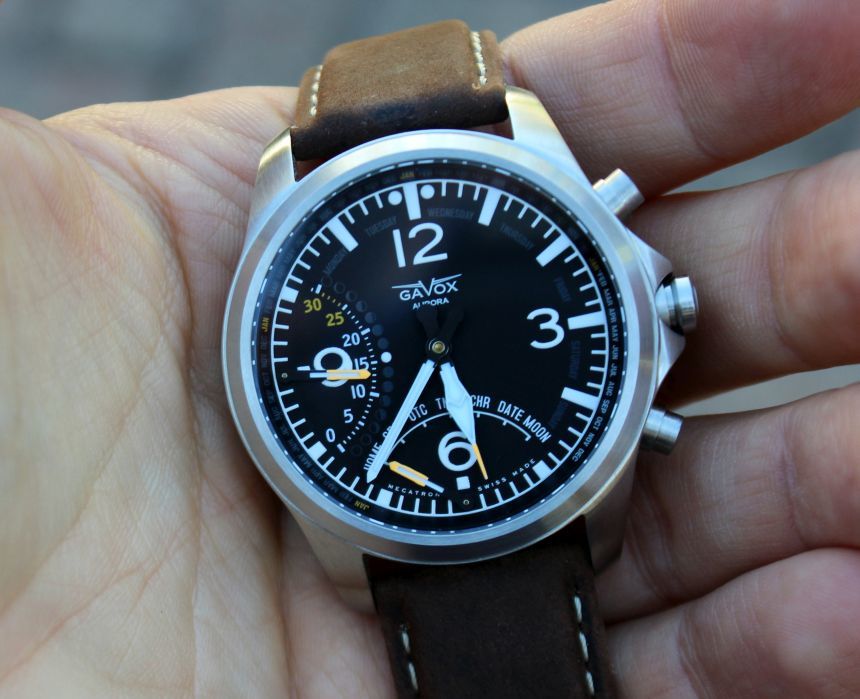
This mode changes the indicator at 9 o’clock on the Gavox Aurora from showing the current date to displaying the running seconds in retrograde. Useful, I suppose, if you want to ensure the watch is still alive, or simply have a sub-one-minute event to time. In this mode, there is no adjusting for us to do, so let’s depress the crown and move on to “UTC.” Here, as I mentioned, is where we set the base time for the watch. As in the “HOME” mode, pulling the crown out puts it into setting mode, and then you use the upper pusher to set the minutes (down to the minute), and the lower to set the hour. Any adjustments made here will in turn impact your home time, so just keep in mind what time zone you’re tracking in each mode.
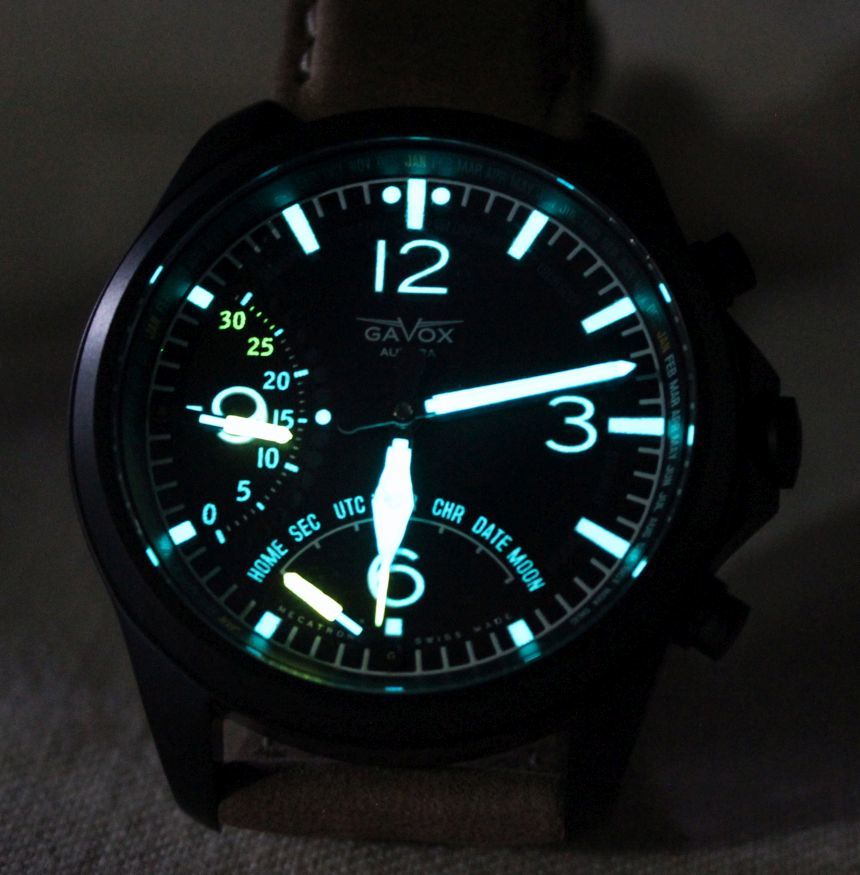
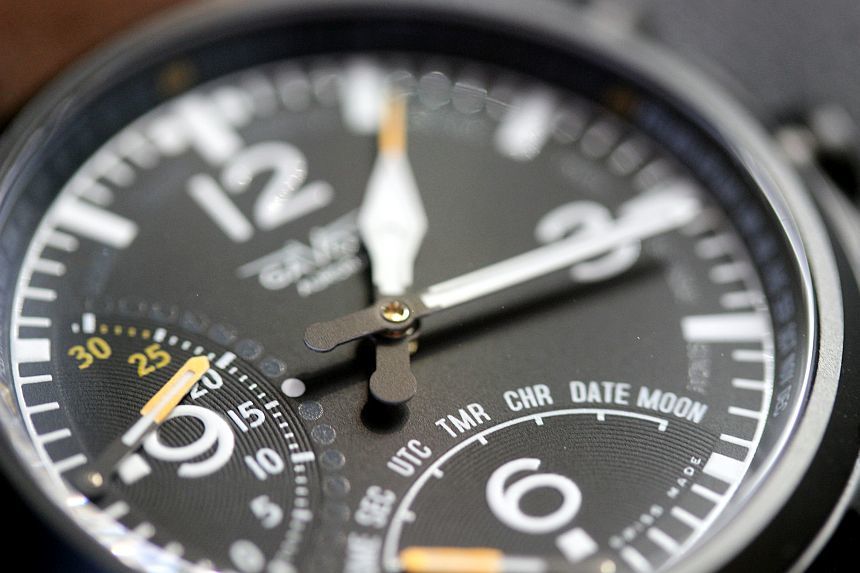
Moving on to the next mode for the Gavox Aurora we have “TMR,” and this enables a countdown timer mode. When setting this, the upper pusher will move the hour hand, which, somewhat confusingly, actually indicates the minutes you’re timing, though this makes sense when you engage the time. The bottom pusher marks up the hours you want, and that is indicated on the retrograde register over at 9 o’clock. Once you have that set, you start, stop, and reset the timer like you would expect on a chronograph. Once started, the minute hand starts ticking backwards. Depending on how long you’re timing something, you can easily go to any other mode, and the timer will keep running. While there is no chirp or chime when the timer completes (it was cost-prohibitive), the watch will switch its function back to the timer mode, so you’ll know it’s complete. Oh, and if you run a one-minute timer? Well, there’s a special surprise awaiting you…
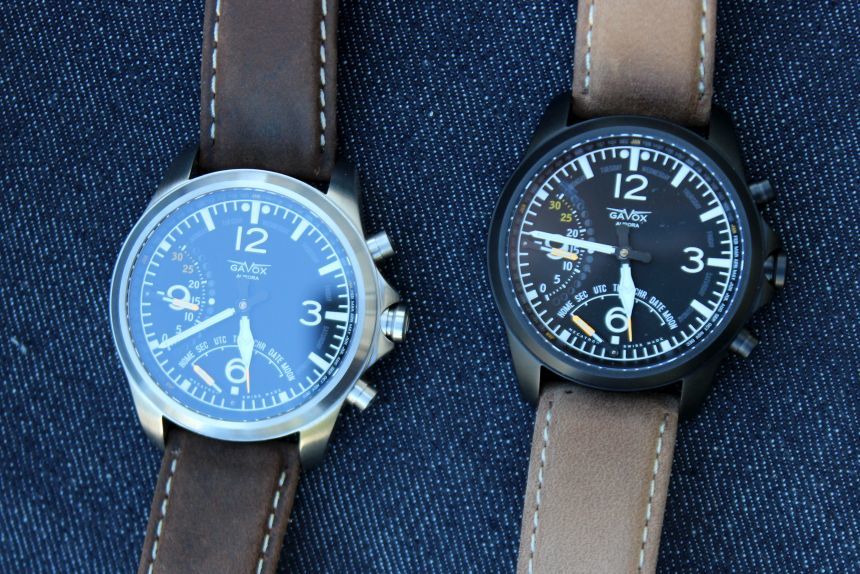
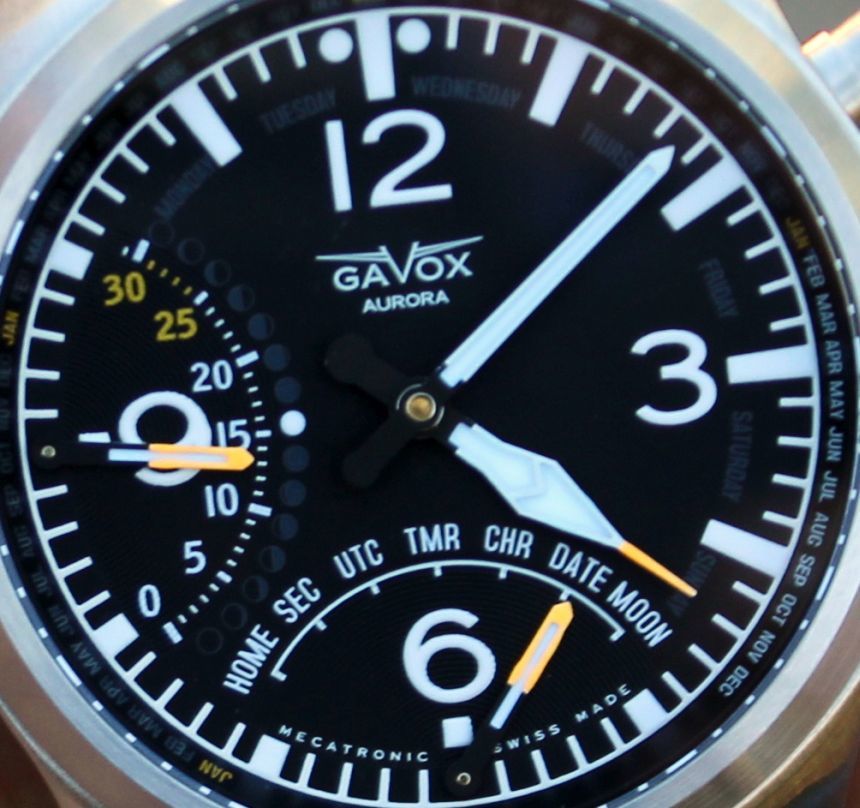
If you would rather count up, the Gavox Aurora does offer a chronograph, which is the next function indicated by “CHR.” This behaves just as any other chronograph you have run across, with the exception that this one can time up to 31 hours (similar to the countdown timer), which I think is the most I have seen on an analog chronograph. The next mode over is “DATE,” and that seems pretty self explanatory, except for the fact that we see the date in the home time display. Well, in the “DATE” mode, you actually get more details. The hour hand indicates the day of week printed below the minute indices, while the minute hand indicates the month printed on the chapter ring, with the retrograde hand still displaying the date. It is also worth noting that the top pusher cycles through which hand you are adjusting, and you get a small “wiggle” in the hand to indicate what you’re on, and therefore what hand the bottom pusher will be adjusting. This shows some great design that kept the user in mind.
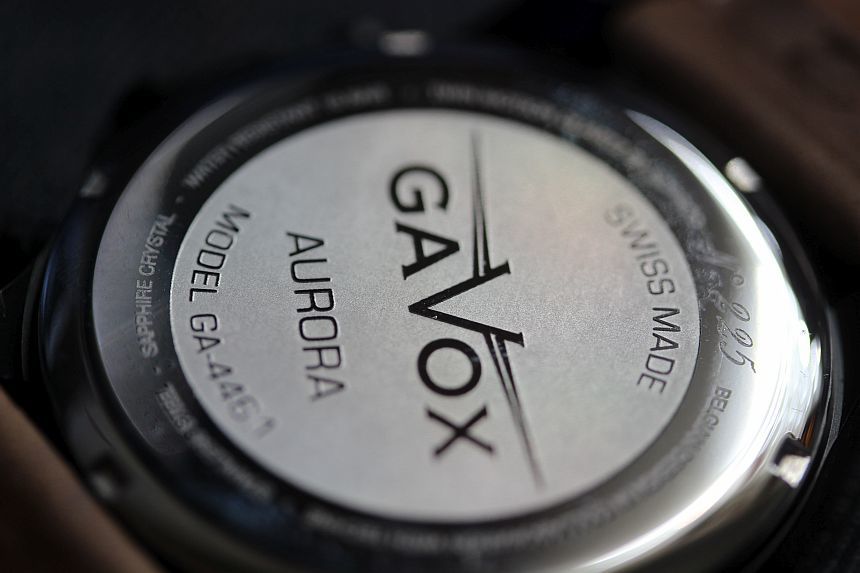
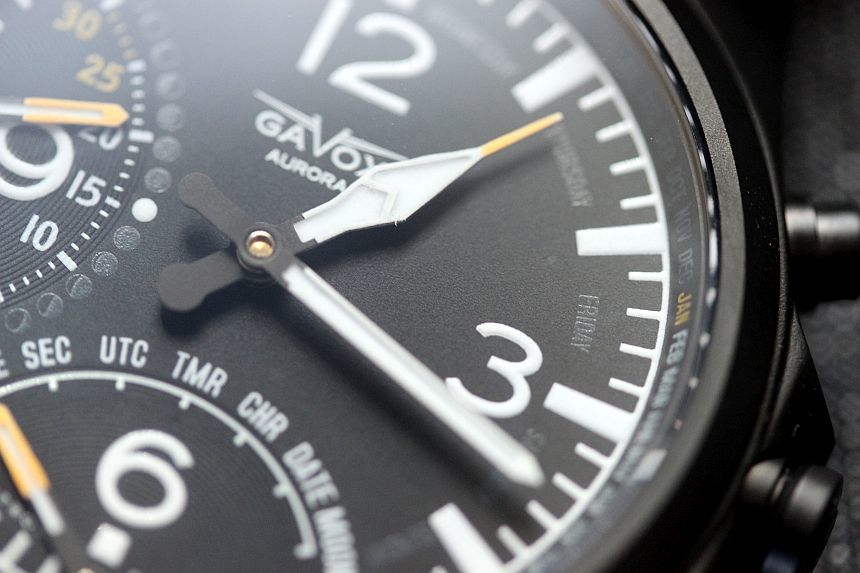
Last, but not least, the Gavox Aurora offers a moonphase indicator. I will say that this is something of a function that I have had very little utility for in the past, and I do not see that changing here. That said, it is something that goes almost hand-in-hand with a perpetual calendar complication, so in that regard, it makes sense that it would be included here. This again makes use of the retrograde register at 9 o’clock, with the moonphases themselves printed on the outer edge. If you need to adjust this at all, you can do so as in any other mode – pull out the crown, and use the upper pusher to adjust.

